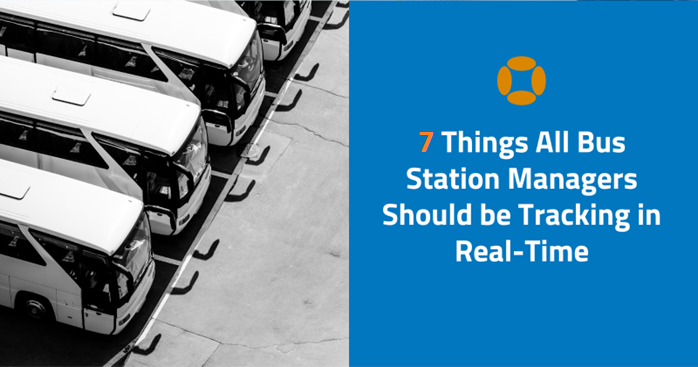7 Things All Bus Station Managers Should Be Tracking in Real-Time
Efficient operations and seamless passenger experiences are paramount in the realm of transit yard management. To achieve these goals, managers need to stay on top of various aspects of their operations in real-time. This requires a comprehensive understanding of the key metrics and data points that influence decision-making. In this article, we’ll delve into the seven crucial elements that all bus station managers should be tracking in real-time, in order to optimize performance and enhance customer satisfaction.

1. Vehicle Arrivals and Departures
Timely arrivals and departures are paramount for a well-functioning bus depot or transit yard. Real-time tracking of buses as they enter and leave the yard or depot allows managers to maintain punctuality and optimize scheduling. By closely monitoring vehicle movements, managers can identify and address any delays promptly, minimizing inconvenience for passengers.
Additionally, this data can be used to improve overall transit yard efficiency. For instance, if buses tend to arrive in clusters, adjustments can be made to the schedule or parking assignments to prevent delays in locating or shuffling vehicles.
2. Maintenance and Repairs
Regular maintenance is essential to keep buses in optimal condition and ensure passenger safety. Tracking maintenance schedules and monitoring the status of individual vehicles in real-time allows managers to proactively address any issues. By using Ubisense’s SmartSpace RTLS, managers can receive instant alerts about vehicles due for maintenance or repairs, enabling them to take immediate action to minimize downtime and maximize fleet availability.
3. Staffing and Resource Allocation
Adequate staffing is crucial to provide passengers with the support and assistance they need. Real-time tracking allows managers to align staffing levels with yard operations, ensuring that there are enough personnel available during peak hours. Additionally, this data can be used to analyze performance metrics, such as search and fetch times across the yard, identifying opportunities for efficiency and cost savings.
4. Security and Safety Measures
Maintaining a safe and secure environment is of paramount importance in any bus depot or transit yard. Real-time tracking of moving vehicles or equipment enables managers to monitor hazardous zones and ensure people are deployed effectively across the yard.
5. Environmental Impact and Sustainability Metrics
As environmental consciousness continues to grow and the introduction of electric vehicles (EV), tracking sustainability metrics has become a critical aspect of operations for bus depots or transit yards. Real-time monitoring of energy consumption and route efficiency can feed directly into yard operations to optimise the use of limited charging spaces. By leveraging data from Ubisense’s SmartSpace RTLS, managers can identify areas where efficiency can be improved and implement sustainable initiatives to align with environmental goals.
6. Inventory Management
Efficient inventory management is crucial for maintaining essential supplies, such as maintenance tools and cleaning supplies. Real-time tracking of inventory levels enables managers to track and replenish supplies as needed, reducing the risk of shortages and ensuring that operations run smoothly. This also helps prevent overstocking, which can lead to unnecessary expenses.
7. Every-day cleaning and fueling processes
Real-time tracking of every day processes like vehicle cleaning and fueling not only allows managers to understand the operational efficiency of their transit yards, but by using advanced technologies such as Ubisense’s SmartSpace Transit, managers can start to automate status updates of vehicles and integrate into different systems, saving time and energy.
Conclusion
In an era where data-driven decision-making is paramount, bus station managers must leverage real-time tracking to optimize their operations. By focusing on the above metrics, managers can enhance passenger experiences, improve operational efficiency, and drive sustainability efforts. With advanced solutions like SmartSpace, managers have access to cutting-edge technology that provides invaluable insights and enables prompt, informed decision-making. By prioritizing these tracking elements, managers can pave the way for safer, more efficient, and ultimately more satisfying travel experiences for their passengers, ensuring the success and longevity of their operations in the long run.
